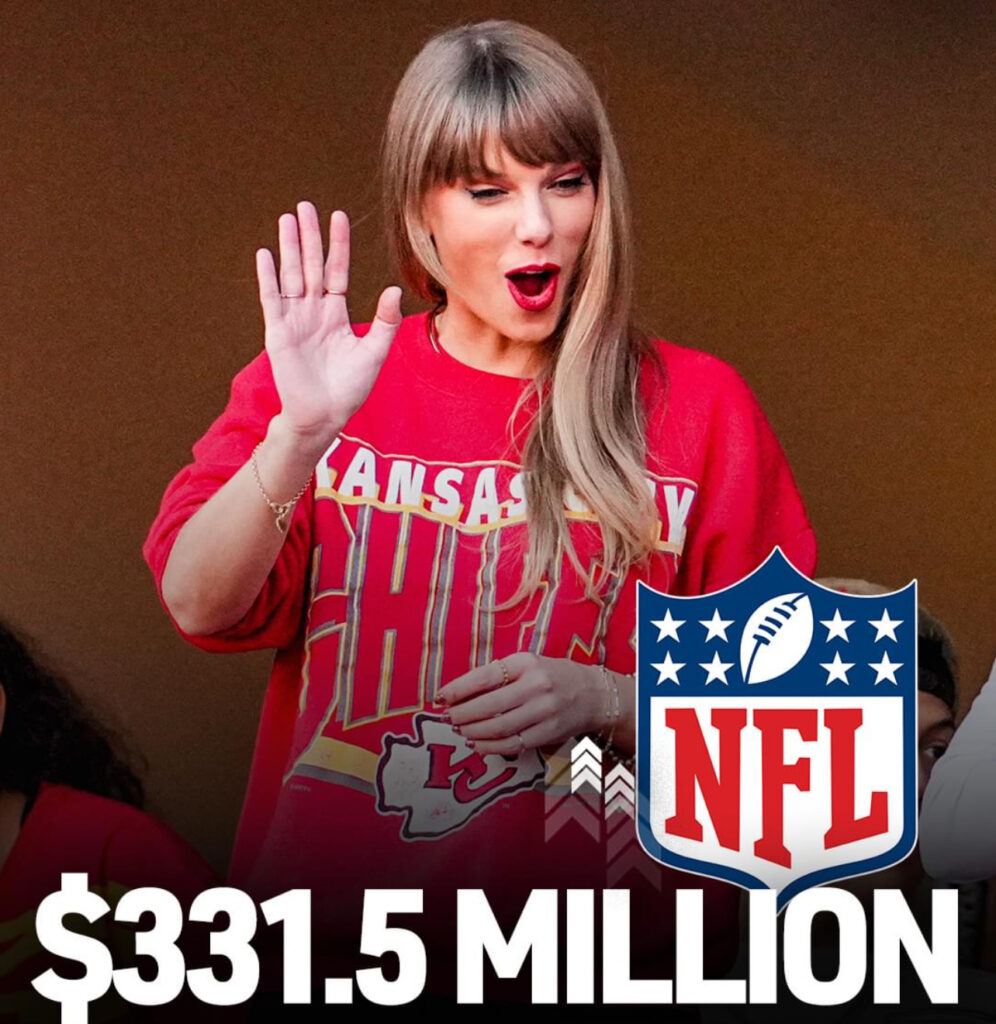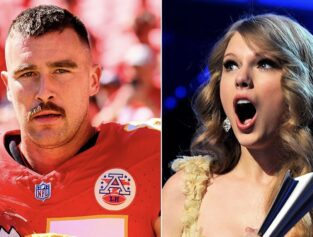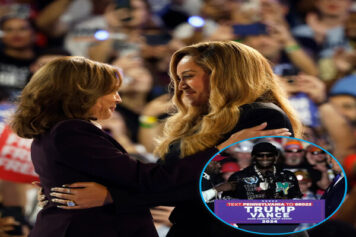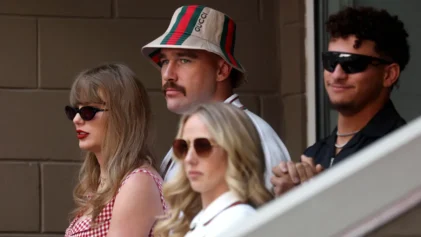Now that the dust has settled on the AFC and NFC championship games, we have a Super Bowl featuring the Kansas City Chiefs vs. San Francisco 49ers. Immediately after the Chiefs defeated Lamar Jackson and the Baltimore Ravens, the conspiracy theorists went to town concocting reasons why the Chiefs won.
Everything from both teams followed the fabled “script” that the NFL allegedly writes for pre-determined game outcomes to the Taylor Swift effect were dissected. With the latter, the reasoning is that the pop star’s inclusion into anything NFL, especially the Super Bowl, is the perfect set of circumstances for the league.
Uncle Shannon Takes A Side, Swiftly
Shannon Sharpe took the Taylor Swift effect even further, claiming that no other celebrity can “move the needle” for the league “like this chick.” “Unc” had the conversation with his “Nightcap” co-host Chad “Ochocinco” Johnson.
“Tell me the other person that’s gonna do that,” Sharpe said to challenge his Swift NFL impact theory.
“Beyoncé, hypothetically if she weren’t with Jay-Z,” Johnson said.
“Not like this,” Sharpe quipped back passionately. “These 8-to-15-year-old eyeballs … Ocho, I love Beyoncé. … Beyoncé ain’t moving the needle like this chick, Ocho. She’s the closest thing to moving the needle like Michael Jackson that we’ve seen. This is it.”
But is “Unc” right? Let’s do the numbers.
The Taylor Swift Effect
Since Taylor Swift’s appearances at Kansas City Chiefs games, the Kansas City Chiefs have an additional brand value of $331.5 million heading into the Super Bowl, according to a study by Apex Marketing Group. The company provides brand analytics/feasibilities for municipal/venue owners and commercial brands.

Per Apex president Eric Smallwood, the brand value was measured by tracking mentions, photographs, or news stories about Swift that were aligned with the Chiefs or the NFL from the end of last September to Jan. 22, 2024. So everything from mentions of Swift during broadcasts to millions of households, to radio segments about the Kelce-Swift love affair creates the reach, or viewership, of several media streams.
“Everything has its own metric tied to it,” Swallwood said recently to Fortune. “It depends on how much traffic it gets.”
With Taylor Swift becoming a dominant talking point within the season narrative and into the postseason and now the Super Bowl, that number is bound to scale exponentially in February.
The Taylor Swift Trickle Down Theory
When the Chiefs took on the New York Jets on Oct. 1 last year at MetLife Stadium, Swift’s presence helped at the ticket counter as ticket prices rose from $83 to $119 or more than 40 percent, per TickPick, an online marketplace.
Last September, when Swift appeared at a Chiefs home game vs the Chicago Bears, Kelce’s jersey sales spiked immediately, pushing him into the top five jersey sales category.
“On Sunday, Travis Kelce was one of the top 5 selling NFL players and saw a nearly 400% spike in sales throughout the Fanatics network of sites, including NFLShop.com,” Fanatics, the official merchandiser of the NFL, told NPR. Kelce went from 19th in sales into the top five.
That meant both Kelce and the NFL Player’s Association benefitted big time, as under the current Collective Bargaining Agreement, players receive two-thirds of the money generated from licensed merchandise sales, including jerseys. The remaining one-third goes to the NFLPA itself. The revenue sharing is applied to the wholesale price set by the league and manufacturers.
When the Chiefs faced the Philadelphia Eagles on Monday Night football on Nov. 20 last year, Swift’s appearance made it the best-selling game of the Chiefs’ season at that time.
“We know that Taylor Swift has had an incredible impact on the Chiefs’ sales, including a 3x boost in sales for this matchup following her first appearance,” said a spokesperson for StubHub to KMBC Newschannel 9 local Kansas City last November. “Combining that draw – driven by a rumored appearance — with a Monday night game, featuring a Super Bowl rematch, we have the best-selling NFL game of the weekend, outselling the Cowboys-Panthers by 20%.”
Swift is also a football stadium sellout crowd draw all by herself. With sellout crowds at 20 NFL stadiums for her current Eras Tour and plans to play in three more football venues in 2024, Swift isn’t new to this; she’s true to this. She blessed Arrowhead Stadium way before Travis Kelce could even imagine winning a Super Bowl, as her Speak Now world tour visited Arrowhead in 2011, two years before Kelce’s NFL drafting in 2013.
Ironically, Beyoncé has performed twice at the Super Bowl as a solo artist in 2013 and 2016, when she joined Bruno Mars and Coldplay. Super Bowl XLVII 2013 drove $480 million in spending in New Orleans when the Baltimore Ravens defeated the San Francisco 49ers with Beyoncé headlining.
Imagine what a Swift appearance would do in Las Vegas next month? Casino brass in the desert are somewhere rubbing their hands together in anticipation.
The estimated revenue generated by Super Bowl 50 in 2016, when the Denver Broncos defeated the Carolina Panthers, was about $620 million through broadcasting and digital media, which is about $375 million in actual revenue. The Pepsi Halftime Show contributed $12 million of that.
Taylor Swift has never performed at a Super Bowl, with many believing it was because of her “long-term partnership” with Diet Coke in 2013, the year Pepsi began its decade-long halftime show sponsorship deal. However, once Apple Music became the halftime show’s sponsor, TMZ reported that she still turned down the opportunity until she “finished rerecording all of her first 6 albums.”
With Jay-Z as a partner to the NFL with his Roc Nation company and both his artist Rihanna and his wife Beyoncé having both performed at the Super Bowl, Shannon Sharpe might be right.
Regarding moving the needle and the wallets in the entertainment side of sports, Taylor Swift is the cash register the NFL never knew it needed. If Travis Kelce ever breaks up with her, NFL commissioner Roger Goodell’s job might be on the line.



